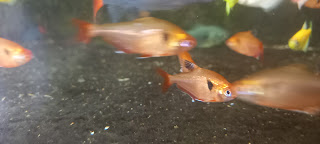Common Goldfish Diseases and treatment
Goldfish are beloved pets known for their vibrant colors and graceful movements. However, like any living creature, they are susceptible to various diseases that can affect their health and well-being and fatal. Understanding these common ailments and their treatments is crucial for keeping your goldfish happy and healthy. 1. Ich (White Spot Disease): Symptoms: White spots resembling grains of salt on the body, fins, and gills, along with flashing or rubbing against objects or aquarium decor. Treatment: Increase water temperature to 78-80°F (25-27°C) and add aquarium salt. Medicated treatments containing formalin or malachite green can also be used. Special formulated anti ich medicine also available in aquarium shop or online platforms. 2. Fin Rot: Symptoms: Tattered or decaying fins, often with a white or red edge. In severe cases, the infection may spread to the body. Treatment: Improve water quality through regular water changes. Treat with a

